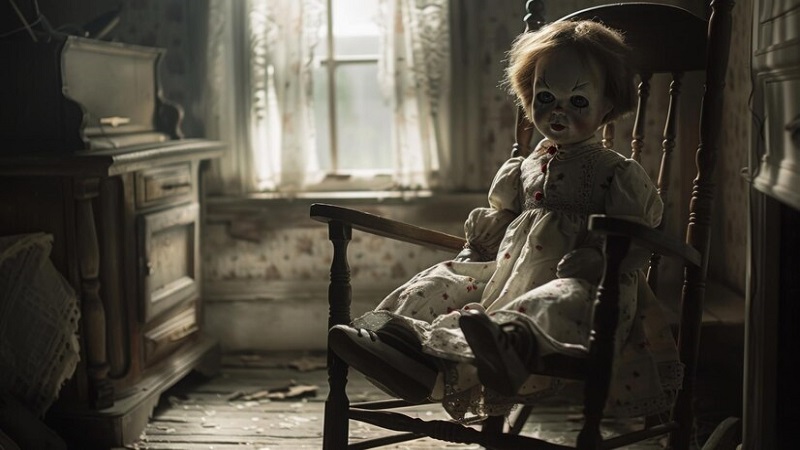Introduction
“Poltergeist,” directed by Tobe Hooper and produced by Steven Spielberg, is a classic 1982 horror film that has left an indelible mark on the genre. Known for its chilling storyline and groundbreaking special effects, “Poltergeist” has intrigued audiences for decades.
Among the film’s many unsettling aspects is the use of real human skeletons during the production. This controversial choice has been the subject of speculation and debate. This comprehensive examination will delve into the specifics of this decision, its implications, and the broader context surrounding it.
Context and Background
Before delving into the skeleton controversy, it is essential to understand the film’s background. “Poltergeist” tells the story of the Freeling family, who experience a series of supernatural disturbances after their home is built over a cemetery. The film’s plot revolves around ghostly apparitions and terrifying events, culminating in the abduction of the youngest daughter, Carol Anne.
The production of “Poltergeist” involved a team of talented professionals working together to create a memorable horror experience. The special effects and set design were crucial to bringing the film’s eerie vision to life, and this is where the use of real skeletons became a focal point.
The Decision to Use Real Skeletons
The decision to use real skeletons in “Poltergeist” stemmed from a combination of factors. At the time, the film’s production team sought to create authentic and unsettling effects for scenes involving skeletons. The practical effects team, led by special effects supervisor Craig Reardon, aimed for a level of realism that could not be achieved with replicas alone.
One particular scene that required real skeletons was the infamous swimming pool sequence. In this scene, the Freeling family’s backyard pool becomes a site of supernatural terror. The pool is filled with skeletons that emerge from the murky water, contributing to the film’s climax. The decision to use real skeletons was influenced by the desire to achieve a high degree of realism and impact in this pivotal scene.
The Ethical and Practical Considerations
The use of real human skeletons in “Poltergeist” raised significant ethical and practical concerns. The primary issue revolves around the sourcing and handling of these skeletons. According to reports, the skeletons used in the film were obtained from medical supply companies, which at the time were known to sell real human remains for educational purposes. The ethical implications of using real skeletons in a film production are complex. The film’s creators were aware of these concerns and addressed them in various ways, but the controversy persisted.
From a practical standpoint, the use of real skeletons posed challenges in terms of safety and logistics. Real skeletons are brittle and fragile, making them difficult to handle and work with on set. The special effects team had to take extra precautions to ensure the safety of the actors and crew while working with these remains.
The Impact on the Film’s Reception
The use of real skeletons in “Poltergeist” has had a lasting impact on the film’s reception and legacy. The revelation has contributed to the film’s mystique and ongoing fascination. However, the controversy surrounding the use of real skeletons has also sparked debates about the ethical boundaries of filmmaking. Some critics argue that the decision to use real skeletons was a misguided attempt at realism that crossed an ethical line. Others maintain that the context of the film and the legal acquisition of the skeletons mitigate these concerns.
The controversy has also fueled speculation about the supposed “curse” associated with the “Poltergeist” franchise. Nonetheless, the idea of a curse has become a part of the film’s lore and contributes to its enduring legacy.
The Evolution of Industry Standards
The controversy surrounding “Poltergeist” has had a broader impact on industry standards and practices. In the years following the film’s release, there has been a growing awareness of the ethical considerations involved in using human remains for entertainment purposes. Modern film productions are more likely to use realistic replicas or digital effects to achieve similar results, avoiding the ethical and practical issues associated with real skeletons.
The film industry has also seen a shift toward greater transparency and accountability in the use of sensitive materials. The “Poltergeist” controversy has served as a cautionary tale, prompting filmmakers to consider the implications of their choices more carefully and to prioritize the ethical treatment of human remains.
Conclusion
The use of real skeletons in the 1982 film “Poltergeist” remains one of the most controversial aspects of the movie’s production. While a desire for realism and impact drove the decision to use real human remains. It has sparked ongoing debates about the ethics and implications of such choices in filmmaking.
The controversy has added to the film’s mystique and its lasting impact on the horror genre. It also serves as a reminder of the complexities of creating art. And the importance of considering the broader implications of creative decisions. As the film industry continues to evolve. The lessons learned from the “Poltergeist” controversy will likely influence future practices and standards. Ensuring that respect for human remains remains a priority in filmmaking. For more information visit my site Eagle World Mag.
